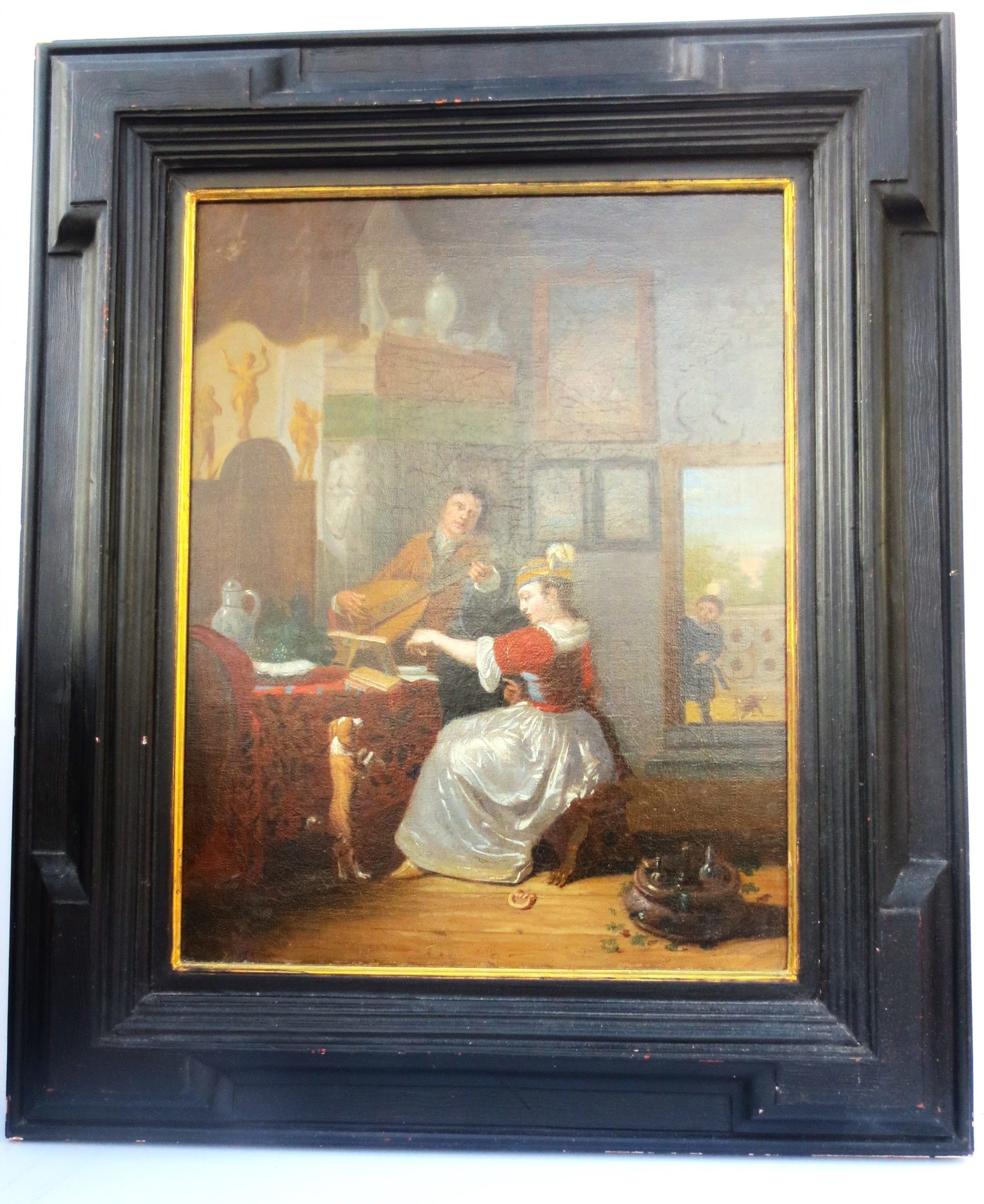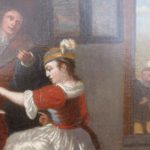Primarily active in Haarlem, Heerschop had artistic ties to Dou in Leiden, de Hooch in Delft and Amsterdam, and Ochtervelt in Rotterdam; then too, early on, Heerschop did several etchings as a disciple of Rembrandt’s, as well as several important studies of African models both as straightforward tronies and figures for history painting. As judged by later critics in only one of Heerschop’s artistic pursuits apart from the total range of his etchings, genre scenes, history paintings and ethnographic portraiture, the cosmopolitan eclecticisms and literate sophistication of much of his art was overlooked.
In this painting, conceived within the general template of de Hooch’s interiors, Heerschop has offered a thoroughly sardonic opinion of the efforts of a young man as an urbane entertainer to a young, elegantly dressed woman more interested in the diversion of a spaniel enthralled by her proffered biscuit in better hope of a reward than her suitor. If not quite famed on the top rung of his generation’s artists, Heerschop did represent the flexible capacities of professional technique, style and intellectually governed subject matter that covered a broad range of Dutch interests in the visual arts of the Golden Age.
Throughout the painting are traits typical of Heerschop’s best work: note the management of the crowded interior that includes furniture, ceramics, wine cooler as part of the paraphernalia of elite domestic comforts; the shimmer of the young woman’s satin, as seen in Heerschop’s history paintings as well, leading to an earlier attribution of this composition to Ochtervelt, and the fez-like cap also seen in interiors by de Man, help align the painting with the fashions of the 1660s in Delft. Even the boy entering this cloistered interior from the open light beyond provides an innocent witness to the courtship in a particularly meaningful use of a mode familiar in de Hooch. Finally, the exact features of the young woman are familiar from several other interiors by Heerschop, suggesting his continued reference to a familiar and favored model, possibly from within his own family. Here then are all the classic elements of a Vermeer, de Hooch, Metsu and Terborch, but with a slightly sharper moral tone and slightly broader traits of handling brush and color.


